Weathering
Weathering: Is the Process which acts at the earth's surface to decompose and breakdown rocks.Two important classifications of weathering processes exist – physical and chemical weathering; each sometimes involves a biological component. Mechanical or physical weathering involves the breakdown of rocks and soils through direct contact with atmospheric conditions, such as heat, water, ice and pressure. The second classification, chemical weathering, involves the direct effect of atmospheric chemicals or biologically produced chemicals (also known as biological weathering) in the breakdown of rocks, soils and minerals.
Mechanical Weathering
♦ Expansion and Contraction (insolation weathering) - the thermal heating and cooling of rocks causing expansion and contraction. Thermal stress weathering is an important mechanism in deserts, where there is a large diurnal temperature range, hot in the day and cold at night. The repeated heating and cooling exerts stress on the outer layers of rocks, which can cause their outer layers to peel off in thin sheets. The process of peeling off is also called exfoliation.♦ Frost Action (cryofracturing) - Frost weathering is common in mountain areas where the temperature is around the freezing point of water. Water freezes at night and expands because the solid occupies greater volume.
♦ Haloclasty (growth of salt crystals): Salt crystallization causes disintegration of rocks when saline solutions seep into cracks and joints in the rocks and evaporate, leaving salt crystals behind. These salt crystals expand as they are heated up, exerting pressure on the confining rock. It is normally associated with arid climates where strong heating causes strong evaporation and therefore salt crystallization. It is also common along coasts. An example of salt weathering is honeycombed stones (tafoni).
♦ pressure release : In pressure release, also known as unloading, overlying materials (not necessarily rocks) are removed (by erosion, or other processes), which causes underlying rocks to expand and fracture parallel to the surface. This process causes exfoliation.
♦ Hydraulic action: Hydraulic action occurs when water (generally from powerful waves) rushes rapidly into cracks in the rock face, thus trapping a layer of air at the bottom of the crack, compressing it and weakening the rock. When the wave retreats, the trapped air is suddenly released with explosive force.
Chemical Weathering
Chemical weathering is a gradual and ongoing process as the mineralogy of the rock adjusts to the near surface environment. New or secondary minerals develop from the original minerals of the rock. Factors which effect the rate of chemical weathering are:♦ Dissolution/carbonation: Rainfall is acidic because atmospheric carbon dioxide dissolves in the rainwater producing weak carbonic acid via the reaction:
CO2(gas)+ H2O(liquid) ↔ H2CO3 (carbon dioxide + water ↔ carbonic acid)
the most well-known solution weathering processes is carbonation, the process in which atmospheric carbon dioxide leads to solution weathering. This takes place when rain combines with carbon dioxide or an organic acid to form a weak carbonic acid which reacts with calcium carbonate and forms calcium bicarbonate:
H2CO3 + CaCO3 → Ca(HCO3)2 (carbonic acid + calcium carbonate → calcium bicarbonate)
♦ Hydration: Mineral hydration involves the rigid attachment of H+ and OH- ions to the atoms and molecules of a mineral. When rock minerals take up water, the increased volume creates physical stresses within the rock. For example iron oxides are converted to iron hydroxides and the hydration of anhydrite forms gypsum via the reaction:
CaSO4 + 2H2O ↔ CaSO4 * 2H2O (anhydrite + water ↔ gypsum)
♦ Oxidation: The most commonly observed is the oxidation of Fe2+ (iron) and combination with oxygen and water to form Fe3+ hydroxides and oxides such as goethite, limonite, and hematite. This gives the affected rocks a reddish-brown coloration on the surface which crumbles easily and weakens the rock. An example is:
2Fe3O4 + ½ O2 ↔3γFe22O3 Magnetite + oxygen ↔ Maghemite
♦ Hydrolysis: Hydrolysis is a chemical weathering process affecting silicate and carbonate minerals. In such reactions, pure water ionizes slightly and reacts with silicate minerals. Aluminosilicates when subjected to the hydrolysis reaction produce a secondary mineral rather than simply releasing cations.
2KAlSi3O8 + 2H2CO3 + 9H2O ↔ Al2Si2O5(OH)2 + 4H4SiO4 + 2K+ + 2HCO3 (Orthoclase + carbonic acid + water ↔ Kaolinite + silicic acid in solution + potassium and bicarbonate ions)
♦ Biological weathering: A number of plants and animals may create chemical weathering through release of acidic compounds. Mineral weathering can also be initiated and/or accelerated by soil microorganisms. Lichens on rocks are thought to increase chemical weathering rates.
Several factors control the type of weathering and the rate at which rock weathers. The mineralogical composition of a rock will determine the rate of alteration or disintegration. The texture of the rock will affect the type of weathering that is most likely to occur. Fine-grain rock will usually be more susceptible to chemical alteration but less susceptible to physical disintegration. The pattern of joints, fractures, and fissures within rock may provide an avenue for water to penetrate. Thus, shattered and fractured rock masses are more likely to undergo weathering than are monolithic structures. Climate will also control the type and rate of weathering by affecting the likelihood of freeze–thaw cycles and chemical reactions. Chemical weathering is more likely to occur and to be more effective in humid tropical climates, and disintegration of rock from freeze–thaw cycles is more likely to take place and to be more effective in sub-Arctic climates.
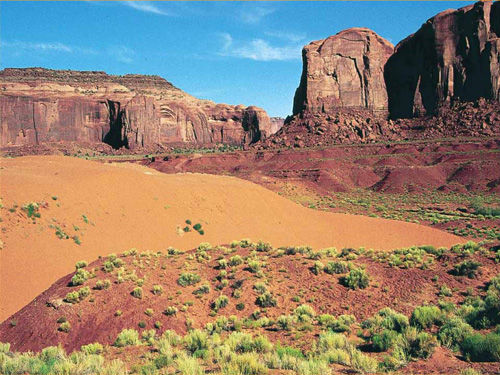
Oxidation processes; monument valley (Utah-USA).
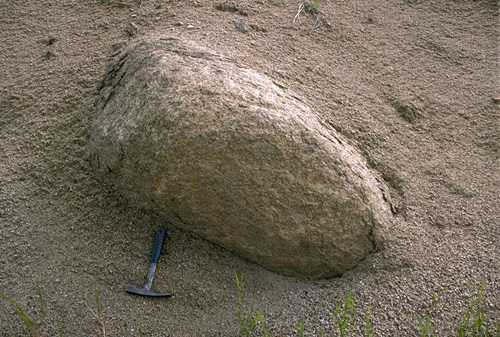
Formation of Grus (sandy material) e corestone (non-alterd core) for Hydrolysis processes.
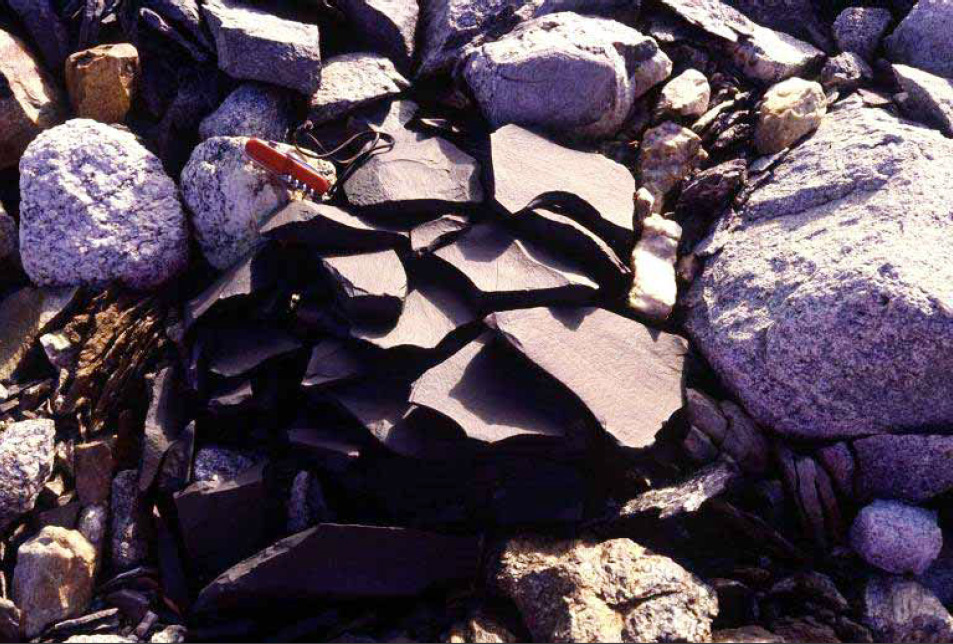
Frost Action (cryofracturing)
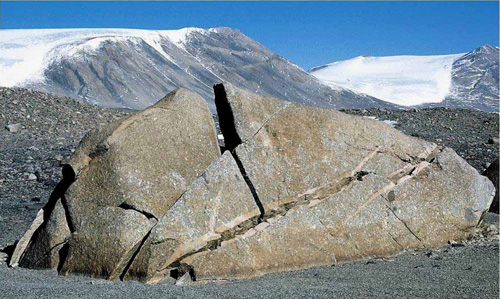
Frost Action (cryofracturing)
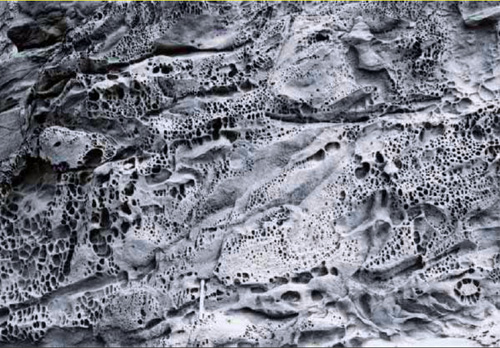
Tafoni: Haloclasty (growth of salt crystals)
Bibliography
• Michael Summerfield: Global Geomorphology (Prentice Hall; 1991)

